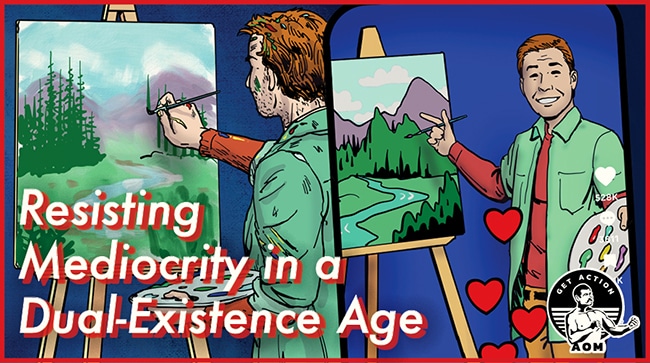
The writer Kyle Chayka recently had a piece in The Guardian called “The Tyranny of the Algorithm: Why Every Coffee Shop Looks the Same.” The article is, as the title suggests, about the way online algorithms have homogenized culture.
One part of the piece that particularly stood out is an exchange Chayka had with Trevor Walsh, who does marketing for a chain of coffee shops:
‘There’s this constant urgency to be producing content. We are constantly feeling like we have to be in people’s phones, be in people’s desktops,’ Walsh said. They had to fill the algorithmic feed.
Simply existing as a coffee shop isn’t enough; the business has to cultivate a parallel existence on the internet, which is a separate skill set entirely. ‘It almost feels like, you must have a social media acumen, you must be savvy in this area that is adjacent to your business, but not directly embedded in your business, in order to be successful and visible,’ Walsh continued.
Entrepreneurs and creatives of all types find themselves in a peculiar dilemma in the modern age.
Authors, for example, lament the fact that publishers will often only offer book deals to writers who already have established “platforms” (read: followers on FB, IG, Twitter, TikTok, etc.). But to grow their platforms, writers have to constantly be creating content for social media . . . making it difficult to find the time to work on their book.
Some already-popular authors try to circumvent this catch-22 by hiring a social media manager, or a whole team of them. But that still requires these writers to spend less time and energy being creative and more time and energy being supervisors. And new and would-be authors can’t justify hiring a hype girl to promote their persona online.
Businesses and creators have, of course, always had to pay some attention to pleasing the public and advertising their wares. But there have been times when artists only had to please the whims of a single patron, and the marketing aspect of a modern creator’s job is, for several reasons, qualitatively different now and has arguably never consumed so much of their bandwidth.
The modern writer, artist, or entrepreneur is not only tasked with promoting the final product of their efforts, but sharing inside looks of their art in progress, and even offering tips on how the average viewer at home can improve their own craft.
A chef in 1985 might promote his restaurant by creating a direct mail advertisement — a one-and-done decision. Today, his marketing goes on daily, as he continuously shares videos, pictures, and ideas with the public. Making these posts to social media not only serves as an interruption to his work, but, because of the neurochemical spell inevitably cast by social posting, his focus will be further fragmented as he regularly checks back to see how his posts performed. Modern marketing becomes a feedback loop of concentration-dividing, deep-work-disrupting, creativity-killing distraction.
Our hypothetical chef not only has to promote his food, but has to promote himself, as a personality. While the personalities of artists, authors, and entrepreneurs have always been something in which the public has taken an interest, formerly, it was just a hinted-at backdrop, and the painting, book, or invention largely spoke for itself. Now, creators must share not only their creations, but snapshots of their private lives as well.
This selects for, and limits, who will find success in the modern landscape. There is only one set of people who are willing to do the thing, and to talk publicly about doing the thing. As the overlap area on the Venn diagram of these factors is likely much bigger for extroverts than introverts, it’s the former who are much more likely to come to the public’s attention.
The catch-22 facing modern creators — the feeling that you can’t make it unless you promote your work online, but you can’t do good work if your bandwidth is always being siphoned off by the act of promotion — has serious implications for both individual creatives and entrepreneurs, and for the health and vitality of our culture at large.
For the individual, there must come the recognition that in living a dual existence — one online and one off — it’s impossible to maintain the same quality of work you’d do if you only had to focus on the latter. An answer to a hard question must be formulated: would you rather do better work or attain greater reach?
It’s not an all-or-nothing dichotomy; you can dial up the focus on real life versus reel life, or vice versa. But wherever you put the slider on one part of the equation invariably alters the other.
It’s possible to decide that even in the modern age, good, quality work will find an audience, perhaps not as big as it could be, but sizable in its own right, largely on its own — that word of mouth, which has been the main form of social media for thousands of years, will continue to allow the cream to rise to the top. And there are still enough underground hits, things that become popular outside the algorithm, to lend support to the veracity of that belief.
It may take an act of faith to believe that quality speaks for itself and remains its own best marketer. But it’s a leap that the brilliance of future art and innovation, and the very pitch of civilization itself, depends on.
The post Craft vs. Content: Resisting Mediocrity in a Dual-Existence Age appeared first on The Art of Manliness.
0 Commentaires